Understanding the Power of ABA in Emotional Self-Regulation
Applied Behavior Analysis (ABA) is a structured, evidence-based intervention that plays a vital role in teaching self-regulation and emotional control in individuals with autism spectrum disorder (ASD). By utilizing specific strategies grounded in behavioral science, ABA helps individuals recognize, understand, and manage their emotions more effectively. This article explores how ABA interventions foster emotional resilience, the techniques involved, supporting evidence, and practical programs designed to improve self-control in children with autism.
How ABA Therapy Improves Self-Regulation and Emotional Skills
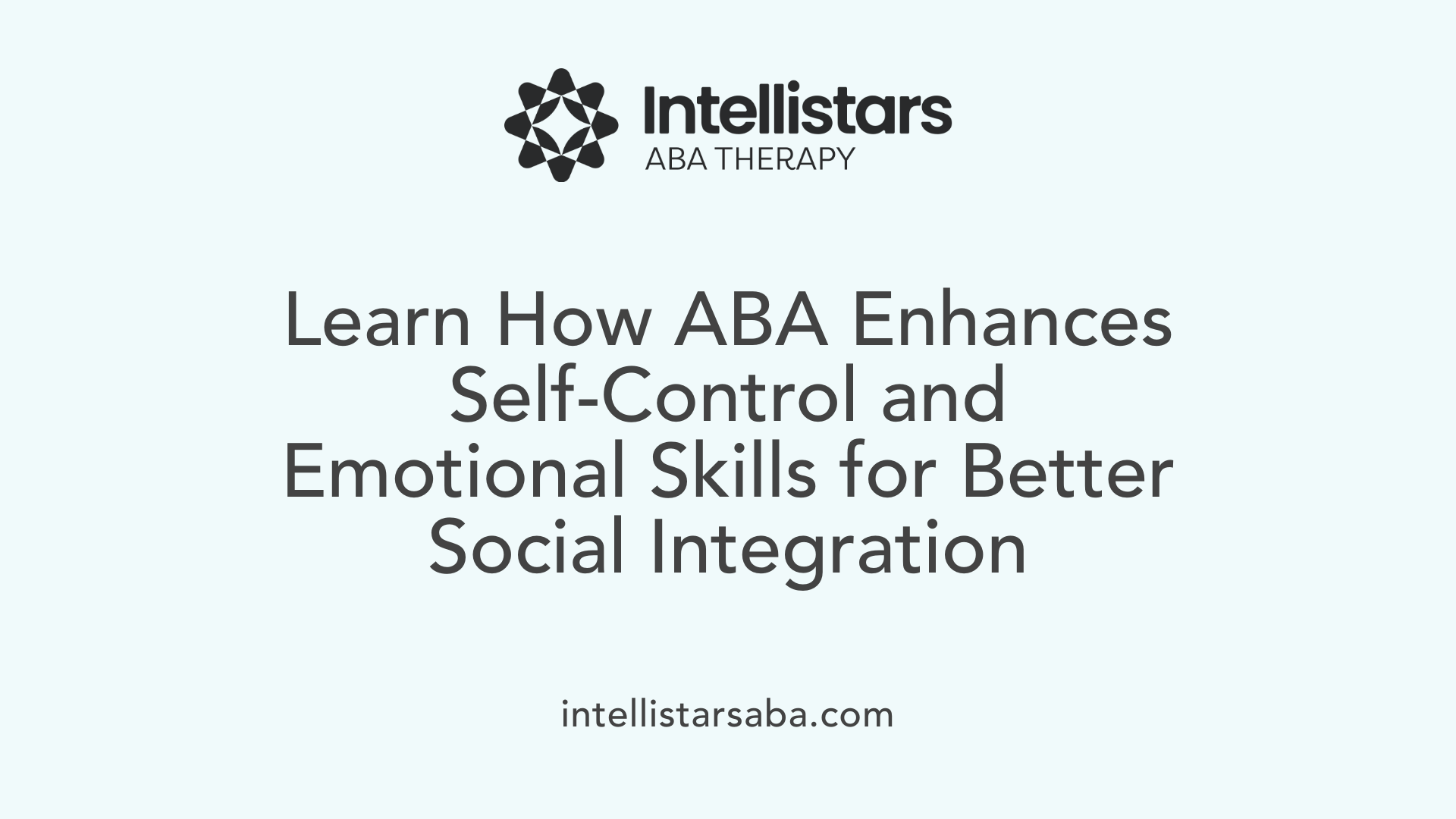
How does ABA therapy improve self-regulation skills?
ABA therapy plays a vital role in enhancing self-regulation abilities, especially for individuals with autism spectrum disorder (ASD). One of its primary focuses is teaching children to recognize and understand their emotions through visual aids like emotional charts and social stories. These tools help children identify their feelings and see the connection between specific triggers and emotional responses.
To effectively manage emotions, ABA therapy breaks down complex behaviors into smaller, teachable steps. This approach makes learning more manageable and allows for gradual skill development. For example, children might learn to use deep breaths or request a break when overwhelmed, through repeated practice and reinforcement.
Reinforcement strategies—such as praise or tokens—are used extensively to encourage desired behaviors. Prompting and modeling further support learning by demonstrating appropriate reactions, providing cues, and guiding children through new coping methods. Over time, these techniques foster independence as children learn to self-monitor, set goals, and apply calming strategies proactively.
Tools like timers, visual schedules, and self-monitoring checklists help track progress and guide children through their routines. Personalized interventions, based on thorough assessments, target specific emotional and behavioral functions. Regular data collection allows therapists and caregivers to monitor growth, adjust strategies, and promote consistent application across various environments.
With practice, fading prompts, and reinforcement, children become more adept at applying their emotional regulation skills in different settings. This comprehensive approach enables them to better handle frustrations, transitions, and social challenges, supporting overall well-being and social integration.
Techniques and Strategies Used in ABA to Enhance Emotional Control
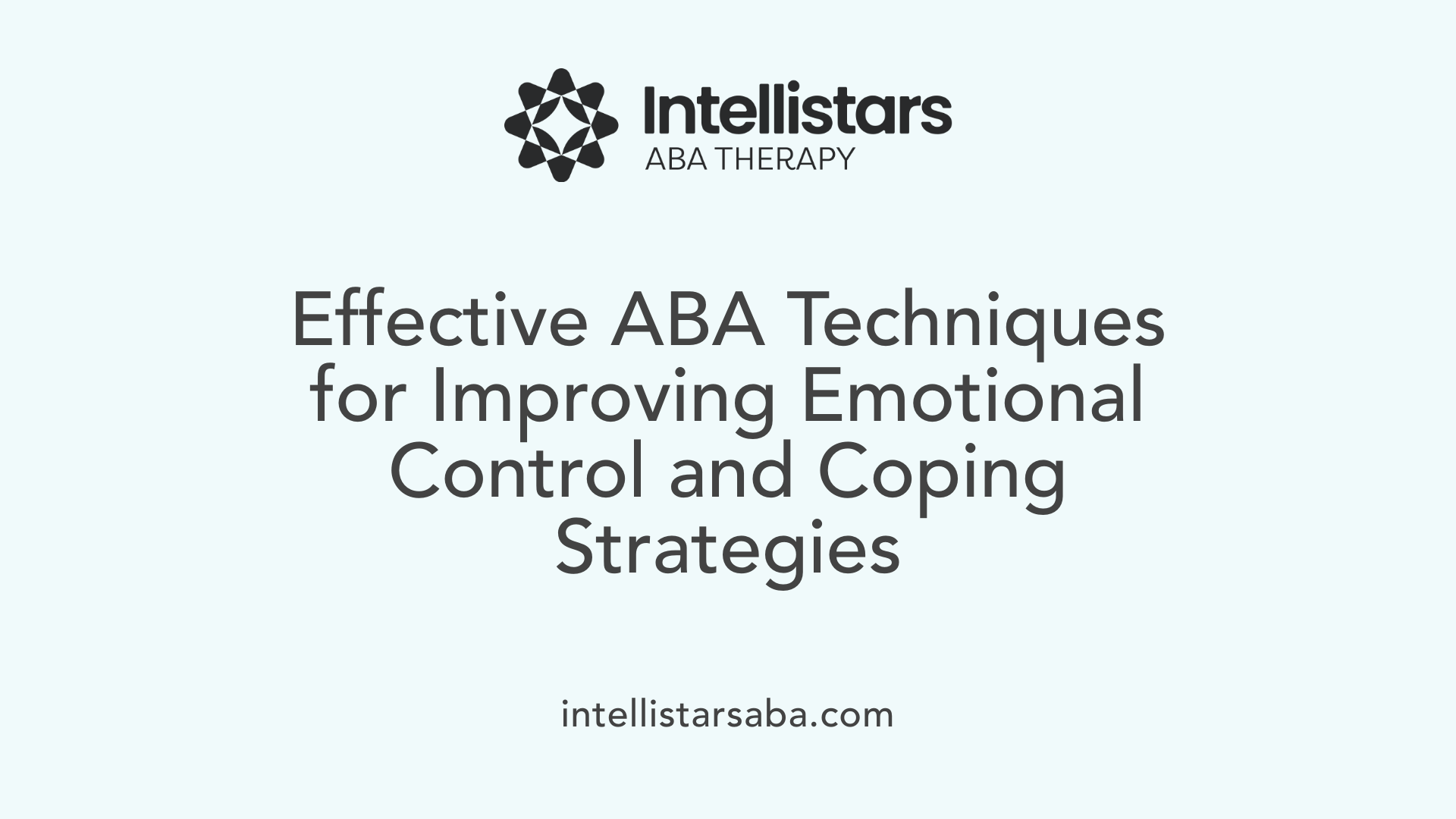
What strategies and techniques are used in ABA therapy to enhance emotional control?
Applied Behavior Analysis (ABA) incorporates a variety of practical and evidence-based methods to help individuals with autism improve their ability to manage emotions effectively. These approaches are tailored to each person’s needs, ensuring progress at a comfortable and sustainable pace.
A fundamental component is teaching recognition and labeling of emotions. Using visual aids like emotion charts, facial expressions, and color-coded systems, therapists help children understand what they are feeling and recognize emotional cues in themselves and others. This increases emotional awareness and prepares them to respond appropriately.
Role-playing, modeling calm behavior, and social stories are key techniques that demonstrate how to handle different emotional situations. For example, children practice responding to common triggers and learn calming responses in a safe, controlled environment. Reinforcement, such as praise or tokens, encourages consistent use of these skills.
Coping strategies like deep breathing exercises, requesting breaks, or engaging in calming activities are taught through step-by-step methods like task analysis and video modeling. Practicing these strategies helps children self-soothe during times of emotional distress.
Environmental modifications, often termed antecedent interventions, play a vital role. Visual schedules outline daily routines to reduce surprises, while providing choices empowers children, decreasing frustration and prevent emotional overload.
Sensory-friendly environments and tools, such as weighted blankets, fidget toys, or noise-canceling headphones, support self-regulation in overstimulating settings. Movement breaks like jumping, yoga, or stretching also help release excess energy and reduce stress.
Overall, ABA therapy combines behavioral techniques, sensory supports, and social skills training to foster better emotional control. This comprehensive approach aims not only to reduce outbursts but also to equip children with lifelong skills for managing feelings proactively, leading to improved social interactions and personal well-being.
Research and Evidence Supporting ABA Effectiveness
What evidence supports the effectiveness of ABA in emotional regulation?
Multiple studies support the use of Applied Behavior Analysis (ABA) as a highly effective approach for enhancing emotional regulation, especially in children with autism spectrum disorder (ASD). Research findings indicate that ABA therapy can lead to notable improvements in emotional and social skills by teaching individuals to recognize, interpret, and manage their feelings appropriately.
ABA interventions often employ tools such as visual aids, social stories, role-playing, and reinforcement strategies. These techniques help children understand their emotional states and develop appropriate responses. For example, visual emotion charts and coping strategy training—like deep breathing or requesting a break—are common components that reinforce emotional awareness and regulation.
The structured, data-driven nature of ABA enables precise tracking of progress, which aids in tailoring interventions. Studies demonstrate that these approaches significantly reduce problematic behaviors such as tantrums, aggression, and emotional outbursts. This is especially relevant given that difficulties with self-regulation are linked to neural circuitry differences associated with ASD.
Furthermore, engaging parents and caregivers through training and reinforcement techniques ensures that emotional regulation skills are practiced across home, school, and community environments. As a result, children are better able to generalize these skills, leading to more consistent behavior over time.
Overall, the accumulated evidence confirms that ABA not only improves behavioral responses but also enhances resilience, social interaction, and emotional safety, contributing positively to the overall development of children with ASD.
Mechanisms by Which ABA Fosters Self-Regulation in Autism
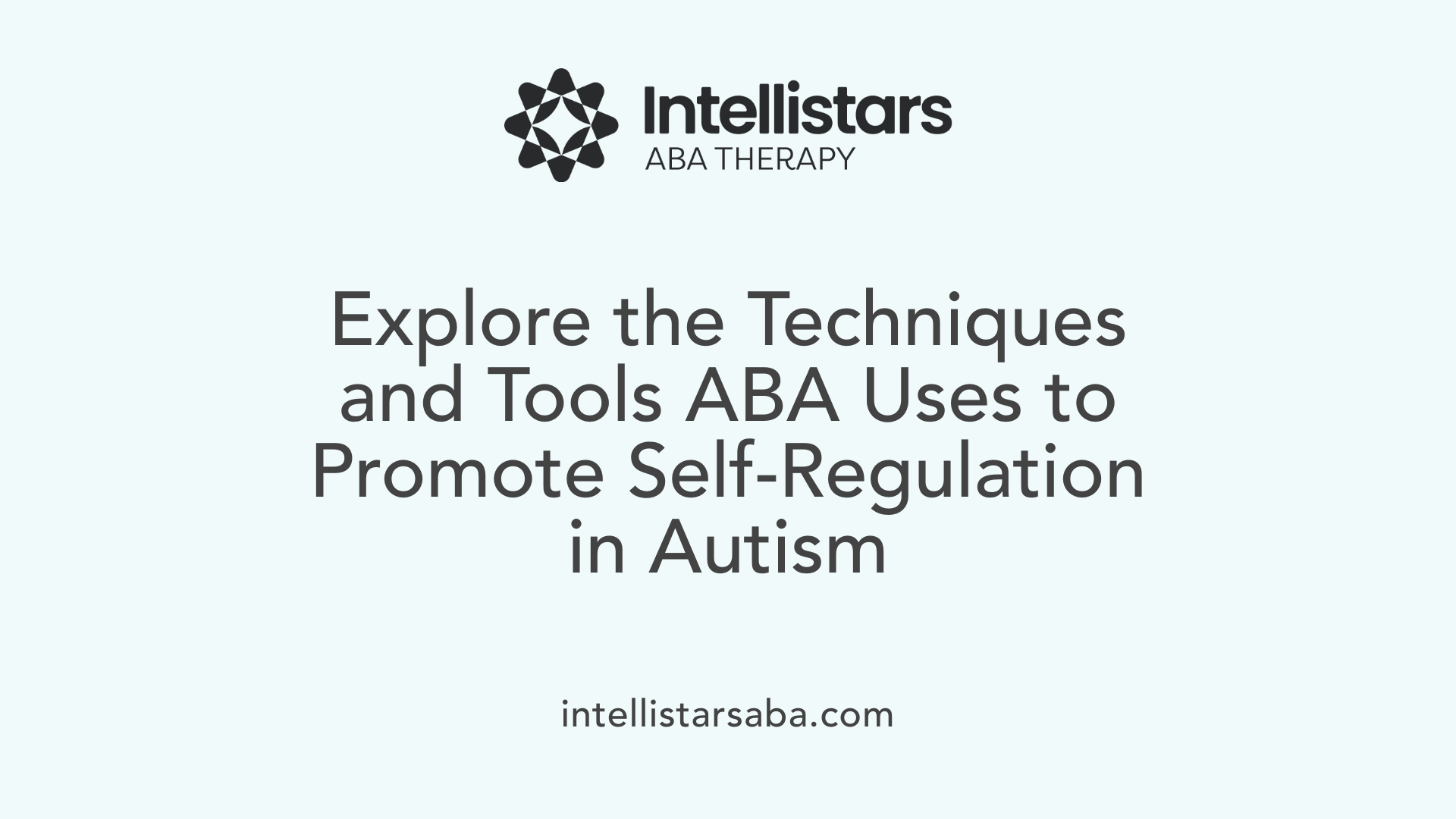 ABA therapy employs several effective strategies to enhance self-regulation skills in individuals with autism. One foundational approach is breaking down complex emotional and behavioral skills into simple, manageable steps. This incremental learning makes it easier for children to grasp and practice self-regulation techniques.
ABA therapy employs several effective strategies to enhance self-regulation skills in individuals with autism. One foundational approach is breaking down complex emotional and behavioral skills into simple, manageable steps. This incremental learning makes it easier for children to grasp and practice self-regulation techniques.
Modeling, prompting, and shaping behaviors are central techniques used in ABA. Therapists demonstrate calming strategies or appropriate responses, then prompt children to imitate these actions. Over time, shaping refines these behaviors, encouraging children to develop more independent self-regulation skills.
Visual supports also play a significant role. Tools like emotion charts, social stories, and visual schedules help children recognize and understand their feelings. These aids clarify emotional states and provide concrete steps for managing different situations, fostering better self-awareness.
Behavioral routines, sensory tools, and structured transition strategies further support self-regulation. Routines create predictability, reducing anxiety and emotional outbursts. Sensory tools such as weighted blankets or fidget toys help regulate arousal levels, particularly in overstimulating environments. Structured cues and calming activities assist children in managing transitions smoothly, limiting frustration and emotional escalation.
Together, these ABA techniques form a comprehensive framework that promotes consistent, adaptive self-regulation skills. They empower children to recognize emotions, control impulses, and respond calmly across various settings, ensuring greater overall emotional well-being.
Benefits of ABA for Managing Emotional Responses
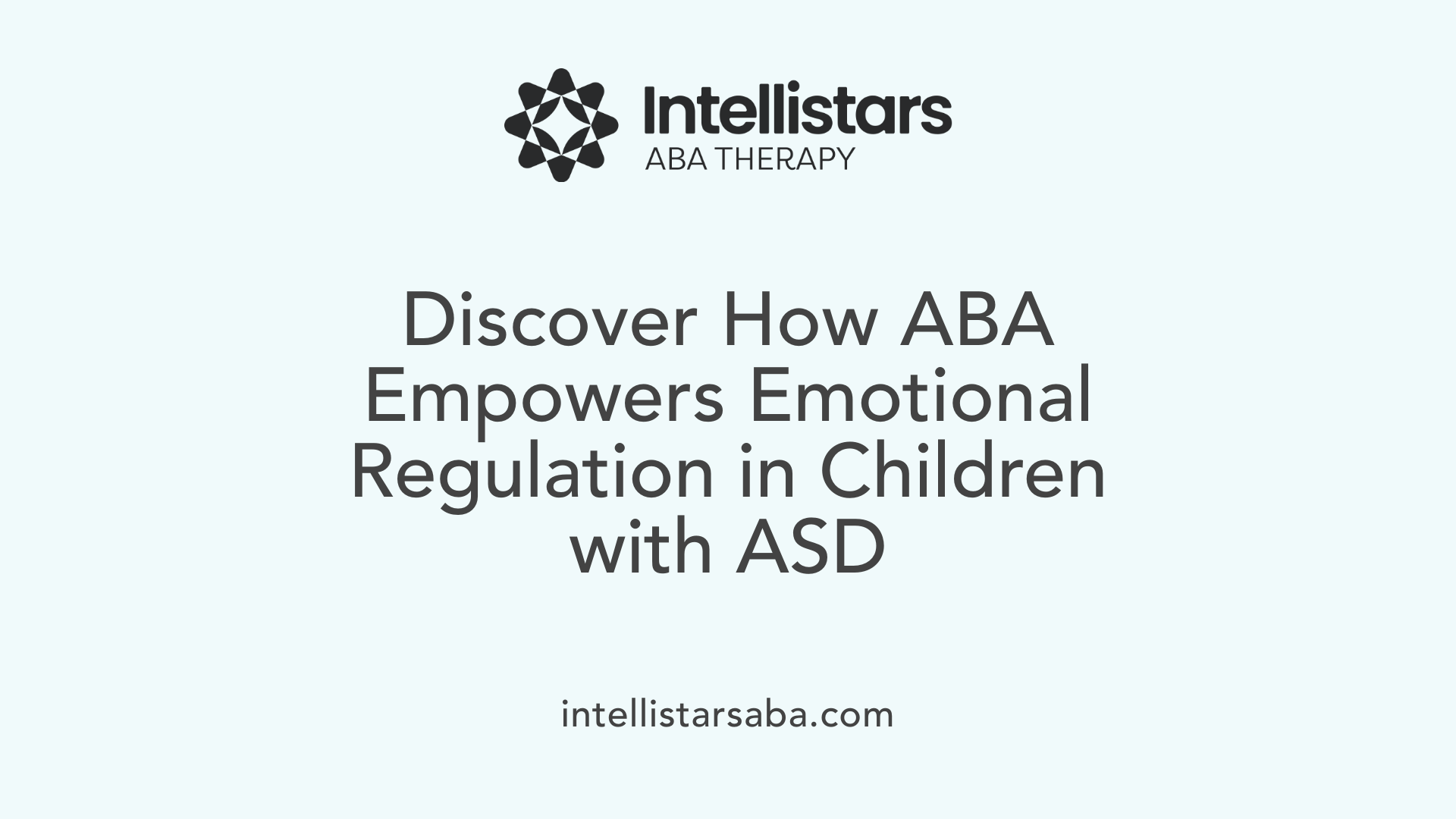
What are the benefits of ABA therapy in managing emotional responses?
ABA (Applied Behavior Analysis) provides several advantages for individuals struggling with emotional regulation, particularly children with developmental disabilities like autism spectrum disorder (ASD). One significant benefit is its ability to decrease emotional outbursts by teaching more appropriate ways to respond to feelings such as frustration, anger, or anxiety. Through structured interventions, children learn to identify and label their own emotions, expanding their emotional vocabulary using visual tools like feelings charts and social stories.
ABA also emphasizes the development of self-regulation skills by teaching coping strategies such as deep breathing, requesting a break, or engaging in calming activities. These skills help children manage overwhelming emotions and improve their ability to transition between tasks smoothly. Moreover, ABA targets environmental triggers—those antecedents that prompt emotional reactions—by modifying surroundings and teaching self-monitoring techniques, which reduces the likelihood of emotional crises.
Consistency across settings and involvement of caregivers through training ensure that these strategies are reinforced regularly, leading to lasting improvements. Data collection and analysis during therapy enable practitioners to track progress, fine-tune interventions, and ensure that each child acquires meaningful regulation skills. By promoting better emotional control, ABA not only enhances individual well-being but also supports social interactions and overall adaptive functioning.
In summary, ABA’s evidence-based approach can significantly improve emotional responses by teaching recognition, regulation, and coping methods, all while addressing environmental factors that influence emotional behavior.
Teaching Adaptive Coping Strategies through ABA
How does ABA therapy teach adaptive coping and emotional strategies?
ABA (Applied Behavior Analysis) therapy provides a structured approach to teaching children with autism and other developmental disabilities how to manage their emotions effectively. It combines various teaching methods, such as modeling, role-playing, and behavior chaining, to help children develop essential self-regulation skills.
One effective strategy involves using visual supports like emotion charts and social stories. These tools assist children in recognizing their feelings and understanding how specific situations can trigger emotional responses. For example, color-coded emotion charts help children identify whether they are feeling angry, anxious, or calm.
Role-playing scenarios allow children to practice appropriate responses to common social or emotional challenges in a safe and controlled environment. Meanwhile, behavior chaining connects small steps into a larger skill, such as requesting a break or calming down after feeling upset.
Establishing consistent routines is another cornerstone of ABA interventions. Visual schedules and checklists create predictability, which helps children feel secure and reduces anxiety about transitions or unexpected changes. When children know what to expect, they are better equipped to manage their reactions.
In addition, calming tools such as weighted blankets, fidget toys, or noise-canceling headphones support self-regulation during overstimulating moments. Distraction techniques, like engaging in a preferred activity or hobby, help children shiftFocus away from stressors.
Parental involvement is crucial in reinforcing these skills beyond therapy sessions. Caregivers are trained to implement strategies consistently across different environments, ensuring that children generalize their coping skills effectively.
Overall, ABA therapy teaches adaptive coping by systematically breaking down emotional regulation into manageable skills, reinforcing positive behaviors, and creating environments conducive to emotional growth. These approaches empower children to handle frustrations, transitions, and sensory overloads more independently and confidently.
ABA's Role in Supporting Autism and Emotional Regulation
How does ABA support children with autism in emotion regulation?
Applied Behavior Analysis (ABA) offers practical, evidence-based techniques to help children with autism better manage their emotions. One of the core methods involves teaching children to recognize and understand their feelings through visual tools like emotion charts, social stories, and role-playing activities. These strategies make abstract emotional concepts more concrete and accessible.
Behavioral techniques such as positive reinforcement and differential reinforcement encourage children to display appropriate emotional responses. For example, praising a child for calmly requesting a break instead of having an outburst boosts that behavior.
ABA also incorporates coping strategies, including deep breathing exercises, sensory activities, and structured calming routines. These methods help children develop the skills needed to self-soothe and regain control during stressful moments.
Crucially, ABA emphasizes teaching functional communication. This allows children to express their emotions and needs effectively, reducing frustration and reactive behaviors. The therapy involves collaboration with caregivers and teachers, ensuring these skills are practiced and reinforced across various settings.
By systematically breaking down emotional regulation skills, ABA programs aim to decrease emotional outbursts, improve self-regulation, and support overall emotional health. Tailored interventions address individual challenges, helping children develop resilience and the ability to navigate their emotions more effectively.
How does ABA collaborate with caregivers and educators?
Effective emotional regulation support extends beyond therapy sessions. ABA programs strongly involve parents and teachers through training and coaching, enabling consistent reinforcement of skills in daily life.
Parents learn to use visual aids, prompts, and positive reinforcement strategies at home. Educators incorporate visual schedules, transition cues, and calm-down techniques into classroom routines.
This approach creates a connected support network that helps children generalize skills across different environments, making emotional regulation more natural and sustainable.
How are social and emotional challenges addressed?
Children with autism often face social and emotional hurdles, which ABA addresses by teaching social cues, emotional recognition, and appropriate responses. Role-playing and social stories help clarify social expectations and teach coping strategies.
Managing environmental triggers is also crucial. ABA involves modifying the environment to reduce stressors and teach self-monitoring tools, like emotion charts, for ongoing self-assessment.
How does ABA foster independence and resilience?
Developing self-regulation enhances a child's independence and resilience. ABA techniques promote learning self-awareness and reflective skills, empowering children to manage their emotions proactively.
Movement activities, sensory regulation, and mindfulness practices like deep breathing are integrated into therapy to build resilience.
By addressing emotional and social challenges holistically, ABA supports children in becoming more confident, adaptable, and capable of handling life's stresses.
| Aspect | Strategies | Goals |
|---|---|---|
| Emotion recognition | Visual aids, social stories | Understand and identify feelings |
| Coping skills | Deep breathing, calming activities | Manage emotional responses |
| Environmental management | Antecedent intervention | Reduce triggers |
| Communication | Functional language training | Express emotions effectively |
| Collaboration | Caregiver and educator training | Reinforce skills across settings |
| Resilience | Movement, mindfulness | Build emotional strength |
This comprehensive approach helps children with autism develop essential emotional regulation skills, supporting their growth toward a balanced and resilient future.
Educational Insights into ABA for Self-Control Development
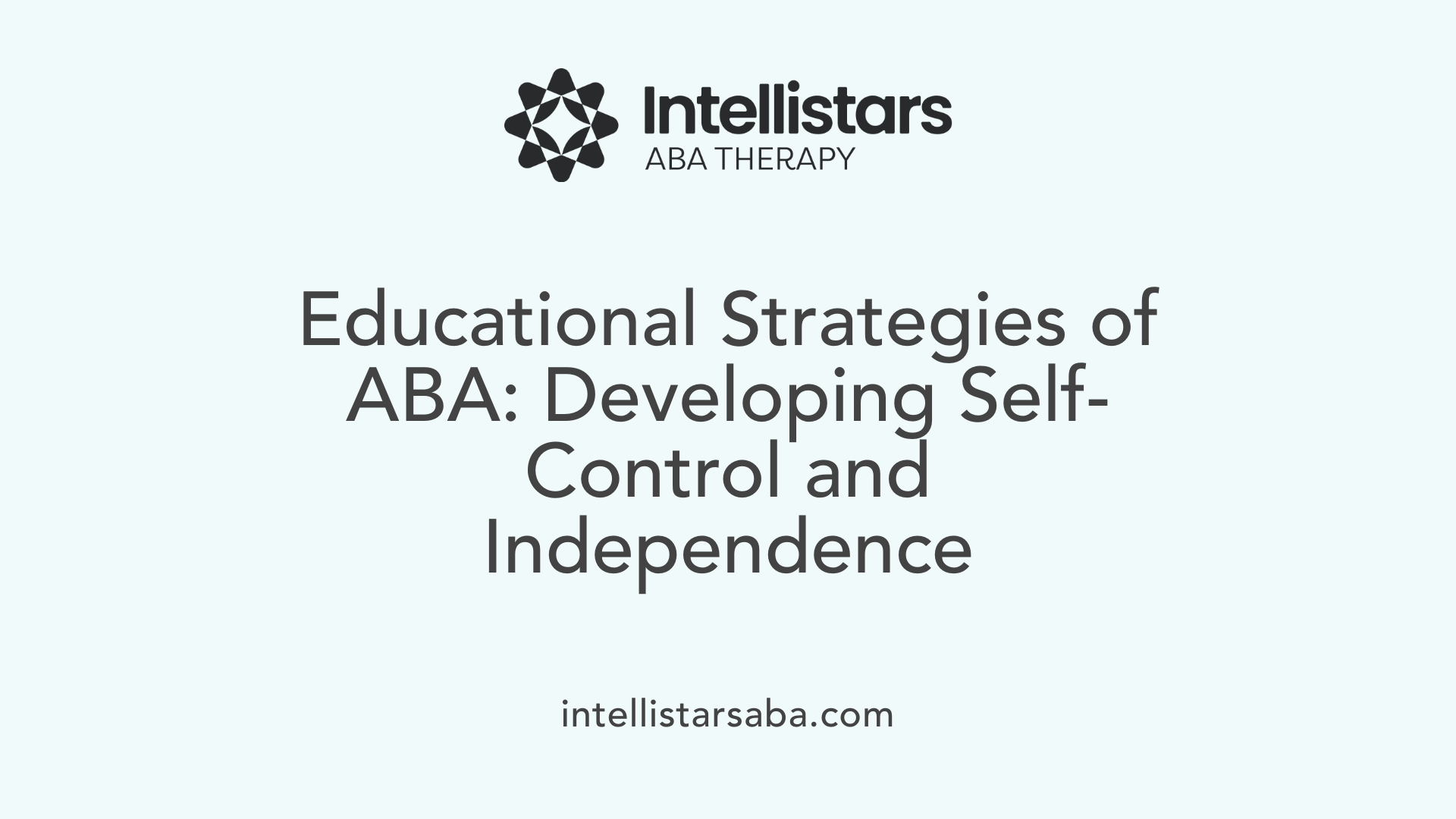
What are some educational insights into ABA methods for developing self-control?
Applied Behavior Analysis (ABA) offers valuable strategies to help individuals develop self-control, especially those with developmental disabilities like autism spectrum disorder. A central aspect of these methods is the use of personalized, data-based techniques. For example, self-monitoring and self-evaluation allow individuals to observe and regulate their own behaviors, encouraging independence.
ABA interventions focus on breaking complex behaviors into small, manageable steps. Visual aids, such as charts or social stories, support understanding and skill acquisition by illustrating emotional cues and appropriate responses. These tools communicate expectations clearly, making it easier for individuals to recognize when they need to employ specific coping or self-regulation strategies.
Teaching self-instruction involves guiding individuals to use verbal or visual reminders to manage their behaviors proactively. This fosters independence by reducing dependence on prompts and encourages internal regulation.
Research highlights the effectiveness of these approaches. For instance, self-management techniques, including goal-setting and reinforcement, have been shown to enhance self-control. Reinforcements like praise or tokens motivate individuals to practice desired behaviors consistently.
Furthermore, interventions that incorporate structured activities during delay periods—such as engaging in calming tasks or alternative rewards—have been effective in increasing the preference for larger, delayed reinforcers instead of immediate gratification.
Routines and consistency also play a crucial role. Visual schedules help predict upcoming events, reducing anxiety and impulsivity. Overall, ABA emphasizes individualized plans, regular monitoring, and practical tools to teach self-regulation, supporting children and adults to manage emotions and behaviors across various environments.
Specific ABA Programs Targeting Emotional and Self-Regulation Skills
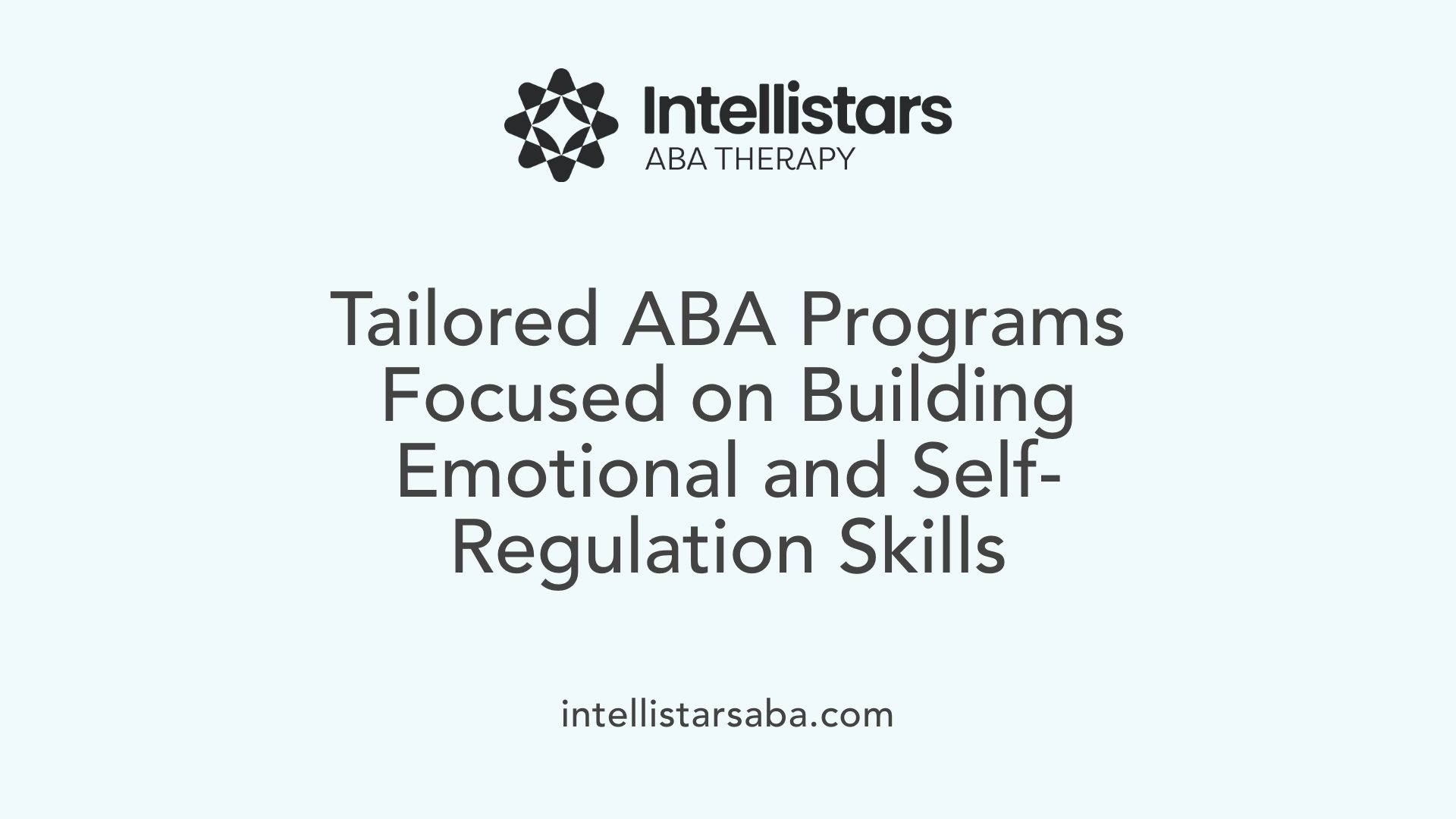
Are there specific programs within ABA that target emotional and self-regulation skills?
Yes, many ABA programs include dedicated components aimed at fostering emotional and self-regulation abilities. These programs are part of a broader approach that integrates multiple developmental areas, such as communication, social skills, and adaptive behaviors.
A common focus is teaching children to recognize and label their emotions through visual aids like emotion charts, social stories, and role-playing exercises. These tools help children understand their feelings and develop better awareness, which is essential for self-regulation.
ABA interventions use reinforcement strategies, like praise and tokens, to encourage appropriate emotional responses. They also incorporate techniques such as modeling, prompting, and shaping behaviors to teach coping strategies, including deep breathing, requesting a break, or engaging in calming activities.
Natural environment training (NET) allows children to practice emotional regulation skills in real-life situations, making the learning relevant and effective. This approach involves teaching skills in everyday settings, promoting generalization and maintenance over time.
Programs are carefully tailored to each individual, considering their unique needs, strengths, and challenges. For example, some children may benefit from sensory-based interventions supported by occupational therapists, while others might engage in mindfulness exercises like guided visualization or yoga.
Furthermore, structured transition strategies and behavioral supports are implemented to help manage environmental triggers and reduce emotional outbursts. These could include visual schedules, checklists, and cues that prepare children for changes in routine.
Progress tracking is established through data collection, which guides adjustments to intervention plans, ensuring that each child’s growth in emotional regulation is supported effectively.
Overall, ABA’s targeted strategies for emotional and self-regulation are designed to help children develop resilience, emotional control, and social competence, enabling better functioning across various environments.
Fostering Long-Term Emotional Competence
ABA therapy not only provides immediate improvements in emotional regulation and self-control but also lays the foundation for lifelong emotional competence. By systematically teaching emotional awareness, coping strategies, and social skills, ABA equips individuals with the tools necessary to navigate complex social environments, manage stress, and respond adaptively to challenges. Ongoing practice, caregiver involvement, and carefully monitored progress ensure that these skills are generalized across settings and sustained over time. As research continually affirms its effectiveness, ABA remains a cornerstone approach in supporting individuals with autism to achieve emotional resilience and well-being, fostering independence and enriching their quality of life.
References
- Teaching Emotional Regulation with ABA Tools
- Autism and Self-Regulation: Why It Matters
- Asperger's Emotional Regulation: Strategies and Insights
- [PDF] Emotional Regulation Strategies
- How Can We Help Kids With Self-Regulation? - Child Mind Institute
- How to Improve Emotional Self-Regulation Among Children with ...
- How to Support Self-Regulation in Children with Autism - AutismCOE
- Emotion Regulation: Concepts & Practice in Autism Spectrum Disorder
- Emotional Regulation in ASD - Autism Research Institute
- The effectiveness of applied behavior analysis program training on ...






